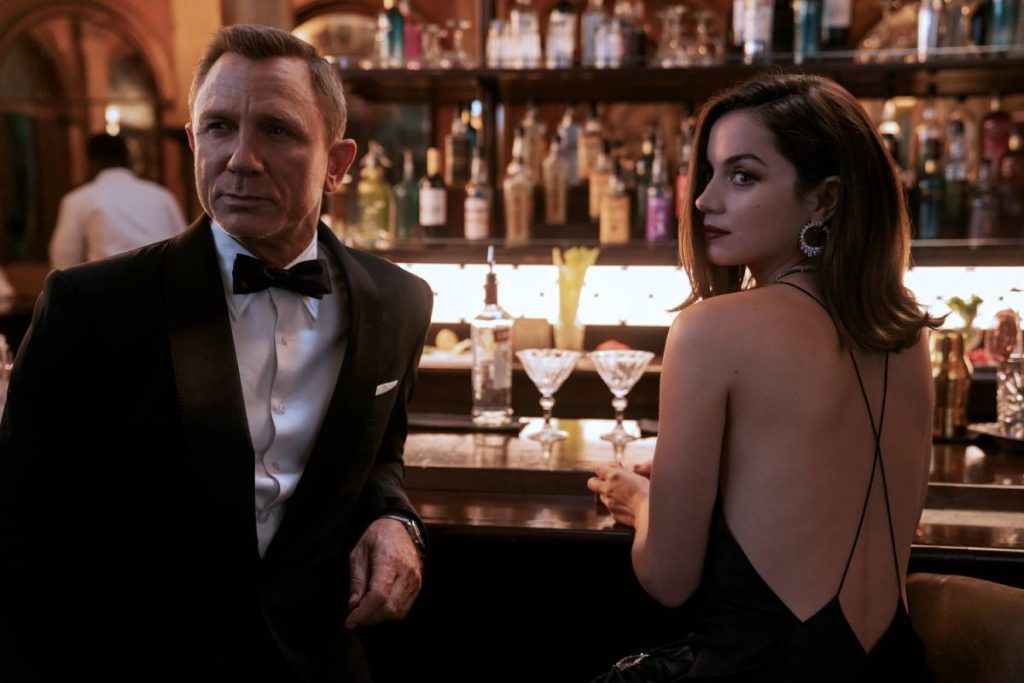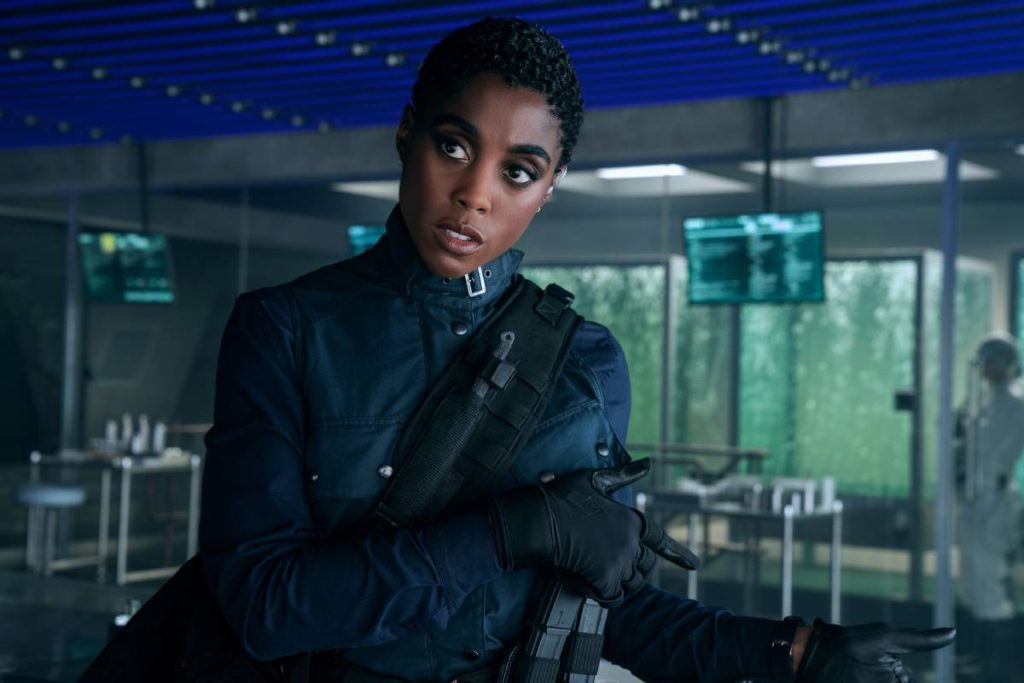For all the hype around No Time To Die being Daniel Craig’s final go-around as James Bond, the film begins in rather unexpected fashion. Before Craig makes an appearance on screen, we’re taken back to the childhood home of Dr. Madeleine Swann, a character played by Léa Seydoux and introduced in the franchise’s previous instalment, Spectre (2015).
Spoiler warning: this article contains spoilers for No Time To Die, available now on on 4K Ultra HD, Blu-Ray & DVD.
The infant Swann (played here by Coline Defaud) lives with her mother in a snowed-in property in the middle of the Norwegian forest. Swann pines for the return of her father, while her mother lies on the sofa, drunk and racked with fatalistic despondence.
Speaking in French, Madeleine’s mother asks her if she knows what her father does for a living. He’s a doctor, replies Madeleine, which causes her mother to scoff. No, she says, he kills people. “Is that who you worship? Murderers?” she asks.
By beginning the film with this sequence—which goes on to depict a traumatic event that haunts Madeleine deep into adulthood—director Cary Joji Fukunaga (Beasts of No Nation, Jane Eyre) invites audiences to see Seydoux’s character as more than just James Bond’s latest love interest.
Make no mistake: James Bond remains the primary focus of No Time to Die and Craig is given ample opportunity to showcase the debonair charm and compassionate reserve he’s brought to the role since debuting in Casino Royale (2006). But the introductory sequence—which precedes the film’s opening credits, soundtracked by Billie Eilish—signals the enhanced narrative significance of the film’s female leads.

Daniel Craig and Ana de Armas. (Photo: Supplied)
Following the flashback to Swann’s childhood, No Time to Die picks up where Spectre left off. Dr Swann and the recently retired Bond are holidaying in the Southern Italian city of Matera. Swann has taken them there so that Bond can visit the tomb of Vesper Lynd, the one-time British foreign liaison agent and Bond’s lover circa-Casino Royale.
Love Music?
Get your daily dose of everything happening in Australian/New Zealand music and globally.
James Bond carries around a lot of repressed grief and trauma. He’s an orphan with a vindictive mass murderer for a foster brother. He’s killed or seriously injured more people than would fit on a P&O Cruise ship. In short, there’s a reason this guy drinks so much whiskey. But Swann, a psychotherapist, knows Bond holds himself responsible for Lynd’s death and encourages him to make peace with this aspect of his past.
On the whole, No Time to Die spends as much time looking back as it does charging into the future. Although retired, it’s not long before Bond reconnects with his secret service colleagues, M (Ralph Fiennes), Q (Ben Whishaw), Moneypenny (Naomie Harris) and M’s chief of staff, Bill Tanner (Rory Kinnear). But the most striking MI6 employee in Fukunaga’s film is portrayed by franchise newcomer, Lashana Lynch.
After things go awry in Matera and Bond splits from Swann, the film jumps ahead five years. Bond is living an isolated existence in Jamaica when Lynch’s character picks him up at a bar and deceives him into thinking coitus is on the cards. After removing her wig and dropping the faux Jamaican accent, however, Lynch’s character reveals herself to be a Double-O agent in the employ of MI6.

Lashana Lynch (Photo: Supplied)
The character (whose name turns out to be Nomi) ascended to the elite 00 ranks after just two years working for the secret service. This rankles Bond, and the pair don’t exactly become instant besties. But Lynch’s character certainly leaves an impression. As she prepares to leave, Nomi tells Bond, “I’m 007.” He is visibly perturbed. “You probably thought they’d retire it,” she says.
This interaction is the first of many to query the utility of status symbols and legacy-building. In another such moment, the film’s primary villain, the sociopathic terrorist Lyutsifer Safin (played by Rami Malek), opines that “life is all about leaving something behind.”
Safin’s philosophy is at odds with the actions of Dr Swann, who, by the time she re-enters the action, is the mother of a five-year-old daughter, Mathilde. Much like Bond and Safin, Swann has spent her life grappling with past trauma. However, in contrast to her male associates, she seeks not vengeance or domination, but healing and the provision of a safe life for Mathilde.
In a more amusing demonstration of the futility of coveting status, Nomi eventually admits she’s not especially attached to the 007 accreditation. “It’s just a number,” she says. Yeah, right—try telling that to Bond. Bond, for his part, regains the 007 rank, but by now the title has been rendered purely decorative; it’s one’s actions that really matter.
No Time to Die contains all the high-tech, phenomenally-executed stunts, chase sequences and shoot-outs that Bond fans would expect. But the destructive action is offset by a level emotional depth that’s rarely seen in a Bond film.
Nomi, Dr Swann, and the Cuban CIA agent, Paloma (a role performed with show-stealing aplomb by Ana de Armas), are more than capable of saving their own skins. But by bringing these characters’ stories and personalities to the fore, Fukunaga and his co-writers have created one of the most resonant films in the entire 007 oeuvre.



































